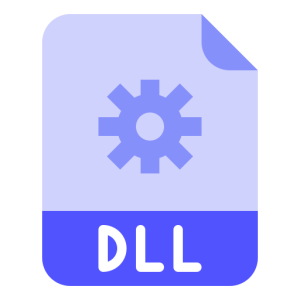Description
QT5GUI.DLL
QT5GUI.DLL is a dynamic link library (DLL) file that is a component of the Qt framework. Qt is a cross-platform development framework widely used for building graphical user interfaces (GUI) and applications. This DLL file specifically provides essential functionality and support for GUI-related operations in Qt-based applications.
The QT5GUI.DLL file contains a set of functions, classes, and resources that enable the creation, rendering, and interaction with graphical user interfaces in Qt applications. It is responsible for handling various aspects of GUI elements, such as drawing, event handling, window management, and graphical rendering.
Qt is known for its comprehensive and modular architecture, and QT5GUI.DLL is an integral part of this architecture. It allows developers to create visually appealing and user-friendly interfaces by leveraging the rich set of GUI-related functionalities provided by the DLL.
Purpose and Functionality
QT5GUI.DLL serves several important purposes and offers a wide range of functionalities, including:
- GUI Element Creation: The DLL provides classes and functions that empower developers to create various graphical user interface elements, such as windows, buttons, menus, text boxes, and more. These elements can be customized and styled to fit the design requirements of the application.
- Event Handling: QT5GUI.DLL facilitates event-driven programming in Qt applications. It manages the flow of events generated by user interactions, such as mouse clicks, keyboard inputs, and window resizing. Developers can define event handlers to respond to these events appropriately.
- Graphics Rendering: The DLL includes features for efficient 2D and 3D graphics rendering. It leverages hardware acceleration and utilizes advanced graphics APIs to provide smooth and visually appealing graphics for Qt applications.
- Window Management: QT5GUI.DLL offers comprehensive window management capabilities, allowing developers to create and manage multiple windows or dialog boxes within an application. It provides functions for window creation, resizing, minimizing, maximizing, and handling window layout and positioning.
- Input Handling: The DLL handles user input, including mouse, keyboard, and touch events, and provides an intuitive interface for developers to capture and respond to these inputs. This functionality enables interactivity in Qt applications.
Common Use Cases
QT5GUI.DLL is utilized in various scenarios where graphical user interfaces are needed in Qt-based applications. Some common use cases include:
- Software Development: Developers rely on QT5GUI.DLL to build visually appealing and interactive applications using the Qt framework. It provides the necessary GUI-related components and functionalities required for creating modern UI designs.
- Cross-Platform Application Development: Qt’s cross-platform capabilities enable developers to write an application once and deploy it on multiple platforms, including Windows, macOS, Linux, and mobile platforms. QT5GUI.DLL ensures consistent GUI behavior and appearance across different operating systems.
- Application Deployment: Whenever a Qt-based application is launched, QT5GUI.DLL is loaded into memory to provide the required GUI support. Applications need to ensure that the necessary runtime components, including QT5GUI.DLL, are present for the correct functioning of the application.

